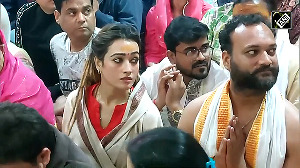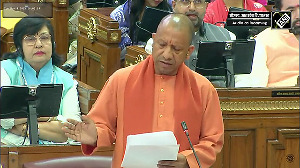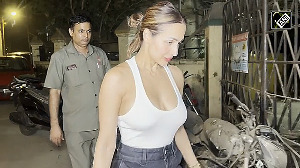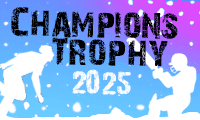They won all six Olympic gold medals between 1928 and 1956, sometimes beating European teams such as Belgium and France by ridiculous margins. They thrashed the United States 24-1 in 1932.
In Amsterdam, where Chand won the first of three Olympic gold medals in 1928, Games officials broke apart his stick to make sure there was no trickery involved in his 15 goals.
But the tables turned dramatically for India in the 1970s and 80s with the advent of artificial turf militating against their free-flowing, creative style of hockey.
Added to that was the emergence of a formal club culture in Europe, while in Asia the attitude remained lackadaisical.
| |||||||||||
Some critics say it is perhaps already too late to rescue Indian hockey, which has sunk to new lows each year, mired in selection controversies and allegations of mismanagement.
But officials are hoping that a new professional league will finally stem the tide. India's Premier Hockey League (PHL), launched last month with much fanfare, holds the hopes of a nation trying to revive its glory days.
The league's future, however, will depend in large part on commercial success.
Broadcasters ESPN-Star Sports, owned by Walt Disney Co. and News Corp., have created the league with the Indian Hockey Federation (IHF) and a private sports management firm.
ESPN-Star will produce, broadcast and market the league for 10 years at an annual cost of some 120 million rupees ($4.25 million), according to estimates. It is also underwriting the cost of 13 foreign players who have signed up, mostly from Pakistan and Malaysia.
RELUCTANT ADVERTISERS
Only four of the 10 teams have corporate backing and it is difficult to get advertisers interested, admits Himanshu Varma, director of corporate communications at ESPN Software India.
"There's a lot of lip service about other sports, but when it comes to actually putting money on the table it has been an uphill task because it is obviously not as lucrative as cricket."
Cricket corners more than three-quarters of all advertising spending on sport in India, estimated at 4.5 billion rupees a year.
While interest in golf, football, hockey, tennis and Formula One is growing, they do not garner nearly as much viewer interest or advertising support.
"Being a one-sport nation, it is a question of a mindset," said Chetan Madaya, general manager of Relay Worldwide, the sports unit of media buyer Starcom MediaVest. "But if they are able to develop it right, the league could be a big property."
Even ESPN-Star admits it will be a long haul.
The league, played over five weeks under floodlights in the southern city of Hyderabad, has had a lukewarm response despite a high-decibel advertising campaign featuring cricket players and film stars in an effort to draw younger fans to a game with few popular icons.
"The TV ratings and the stadium attendance have not been phenomenal," Varma said. "If a schedule clashes with an India cricket match, without a doubt cricket will take precedence on the channel but we're committed to the hockey league."
NEW INNOVATIONS
The hallmark of the league so far has been the innovations introduced to attract a new breed of urban Indian fans, who have less time for hockey than for Premier League soccer and the NBA.
The 10 PHL teams, divided into two tiers, have names such as Bangalore Hi-Fliers, Hyderabad Sultans and Bengal Tigers.
"We want the younger generation to connect with the league," K. Jothikumaran, secretary of the IHF, told Reuters. More floodlit venues were being added and the league might begin playing home and away matches in the near future, he said.
Like some American sports, the matches are divided into four quarters rather than two halves, with timeouts and rolling substitutions, cheerleaders and mascots.
But not everyone believes PHL is the answer to all Indian hockey's ills.
"I agree the style of Indian hockey was one of the greatest in the world, but that was about three decades ago. Now the game had changed completely," said Juan Escarre, Spain's Champions Trophy-winning captain.
"What matters today is speed and that's what is lacking with India and Pakistan. They're still living in the past," he said.
The IHF is not convinced.
"Other teams have stolen a march over us and it would have definitely helped if we'd done this earlier," Jothikumaran said.
"But it's better late than never, all is not lost."








 © 2025
© 2025